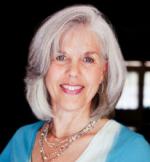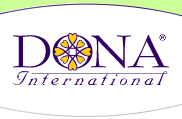By Lysa Parker and Barbara Nicholson, cofounders of Attachment Parenting International and coauthors of Attached at the Heart

It’s important to remember that a one-time class at a local hospital won’t come close to giving you all the important information you need to be prepared for childbirth.
For the best birth outcomes, parents need to be informed and active participants in all decisions that have to be made, as well as the birth.
 To encourage positive birth outcomes, Lamaze International has identified six care practices, adapted from the World Health Organization, that promote, support and protect normal birth. When adopted, these care practices can have a profound effect: instilling confidence in the mother and facilitating a process that results in an active, healthy baby. These care practice include:
To encourage positive birth outcomes, Lamaze International has identified six care practices, adapted from the World Health Organization, that promote, support and protect normal birth. When adopted, these care practices can have a profound effect: instilling confidence in the mother and facilitating a process that results in an active, healthy baby. These care practice include:
- Labor Begins on Its Own — Labor is a set of complex, interacting components. Alteration of the natural process can expose a woman and her baby to unneeded risks.
- Freedom of Movement throughout Labor — Free movement during labor allows a woman to tolerate contractions and assist the baby’s rotation and movement through the pelvis.
- Continuous Labor Support — Current research supports the benefits of continuous emotional and physical support during labor.
- No Routine Interventions — Supporting the natural, normal, physiologic process of birth requires clear medical indications prior to any medical intervention.
- Spontaneous Pushing in Upright or Gravity-Neutral Positions — Allowing a woman to find the positions of comfort and encouraging her to push in response to what she is feeling is beneficial to the birth process.
- No Separation of Mother and Baby, with Unlimited Opportunities for Breastfeeding — When a baby is kept with the mother, there are physiological benefits to both, including the facilitation of breastfeeding.
Lamaze International recommends that care providers, hospitals and birth centers adopt these six practices as standards of care and encourages women and their families to choose care providers and birth settings that employ care practices that promote, support and protect normal birth.
In 1972, a study was published in the book, Why Natural Childbirth? The author, Dr. Deborah Tanzer, was a student of Dr. Abraham Maslow, the theorist who developed the Hierarchy of Needs scale and the theory of the “peak experience,” which he defined what makes life worthwhile and gives it meaning.
Dr. Tanzer was curious about mothers who were delivering babies by the then-“new” method of natural childbirth, which was being touted as a rapturous experience by some mothers.
In her studies, Dr. Tanzer found that as soon as the natural childbirth classes were completed, the women who had taken them showed greatly improved attitudes toward their pregnancies. Five times as many women reporting positive emotions after the birth had taken the childbirth classes.
Another important finding was that the childbirth class takers felt they were much closer to being the type of people they wanted to be. In other words, their self-images were enhanced.
Ironically, the childbirth class takers — most of whom had little-to-no analgesia — reported significantly less pain than the non-childbirth class takers. Almost equal numbers of the two groups reported high pain, but the childbirth class takers outnumbered non-childbirth class takers by eight to one in registering low pain.
The issue that greatly interested Dr. Tanzer was the experience of a peak or rapturous experience. No one in the group that did not take the childbirth classes reported this kind of ecstatic experience, but 10 of the takers in this study did. Overwhelmingly, it was the women whose husbands or partners were with them at both labor and delivery who reported a peak experience.
In summary, here are some of the key points from her research:
- Certain fears, feelings, fantasies, needs and responses seem to be common to all women.
- By the introduction of natural childbirth, the character of the total birth experience is changed radically and in a highly positive direction.
- These differences in childbirth experiences included how the mother viewed herself, the baby and the meaning of the experience. The women in the natural childbirth group emerged happier and healthier.
- The biggest and most positive differences became apparent in the later stages of labor and during the actual birth of the baby, when the woman could begin to push and thus help to expel the baby.
The act of pushing, sense of meaningful activity, participation in the great drama of the delivery room, ability to welcome her new child in full consciousness, joy in accomplishment — these seem to be the truly important facets of natural childbirth and, for these mothers, were the ultimate in a “peak experience.”
Interestingly, we’ve talked to many women through the years who attended natural childbirth classes, yet for various reasons did not have the “perfect birth” experience that they had wanted. Those women seem to have an easier time dealing with their disappointment than those who wonder what might have happened if they had been more prepared.
It seems to be harder on a mother to accept a disappointing or difficult birth when she was not informed enough about the process of labor and delivery, and the doctor was allowed to make all the decisions.
We feel strongly that birth is such a transformative and empowering experience that each pregnant mother deserves to have the best information, enabling her to make the best decisions for her and her baby. The critical time to gather this information is well before the birth.
 On occasion, we see a post circulating the Web about the cash-value of stay-at-home parents if they were paid the going rate for their hours “on the clock” and for the multiple, often-simultaneous roles they play, from “facilities manager” and “counselor” to “janitor” and “teacher.” According to one such post at Salary.com, the average stay-at-home parent is worth an annual salary of nearly $113,000.
On occasion, we see a post circulating the Web about the cash-value of stay-at-home parents if they were paid the going rate for their hours “on the clock” and for the multiple, often-simultaneous roles they play, from “facilities manager” and “counselor” to “janitor” and “teacher.” According to one such post at Salary.com, the average stay-at-home parent is worth an annual salary of nearly $113,000.












